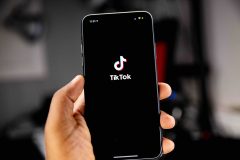Over the past four years, thousands of government officials, representatives and agencies have joined Twitter. Over 200 members of the U.S. Congress are on the service now, according to TweetCongress. How will the social media darling of Silicon Valley serve the government market? What will its first “government liaison” do? “Ev and Biz are excited to see high-level official accounts exchange information on Twitter,” said Sean Garrett (@SG), Twitter’s vice president of communications, speaking in an exclusive interview when I visited Twitter’s offices earlier this summer.

That information exchange is far from limited to activity within the continental United States, given the success of Hugo Chavez on Twitter or the more than 35 verified world leaders on the service. That group now includes Dmitry Medvedev and @KremlinRussia, which joined Twitter in late June. “It’s great to to have the President of Russia using it,” said Garrett, who was present for the visit.
Looking ahead, Garrett anticipates more activity around the 2010 midterm election in the United States, though he didn’t provide specific details. “I think the 2008 Election was the first organized effort into doing something for elections. Our work on the World Cup was an outgrowth of that effort.”
There’s a lot of work that underlies that work, he explained, but the service shouldn’t be judged upon Twitter.com features alone. “What people who understand Twitter know is that we’re not a simple service on a website,” he said. “We’re a diverse ecosystem of users, developers and communities.”
Information Utility, not Social Network
Twitter’s spokesman emphasized that, despite being virtually synonymous with social media, there is an informational aspect of the service. That’s not entirely in-line with how all branches of government are using it, of course. For instance, a recent study suggests that while Republicans use Twitter for outreach, Democrats use it for transparency.
“It’s in our best interest to be read. Twitter is not a social network, it’s an information network,” he said, reiterating a familiar contention from Twitter HQ. “People assume social media is about connecting with family or friends. Microblogging, specifically, puts emphasis on creating content. We want people to focus on consumption of content.”
That perspective may extend to innovative government use cases as well. “It would be awesome to have a Canadian bot that says when it’s ok to travel,” said Garrett. “For a small subset of users, that’s incredibly useful. There’s an expanding Internet of things online now.”
Garrett looks to Twitter’s developer community to build out that ecosystem of applications for government as they learn morem about requirements for sharing. “We have a huge group of developers. It’s in our best interest for them to understand how to work best with verticals. Government is one one of them. That’s why at the Chirp Conference, we had a part largely focused on government alone.”
He also pointed to an opportunity to provide utility for the vertical: “Analytics is a space that would be extremely helpful, particularly for the purpose of relevance and discovery. We get so many requests that we can’t fill them.”
Initial Focus: Washington
“We want to start in D.C. and expand from there,” said Garrett, “but it’s not just D.C. We hope to be helpful globally.
Garrett acknowledged that Twitter realizes that they’re starting late in this space. “We hope to evolve as a service and a company,” he said. “We will be spending a lot of time talking to developers about Annotations. It will be wise to have someone in Washington who can talk about Places and Annotations and how they can be used in government applications.”
So why hire a government liaison in Washington, specifically? “If we don’t have someone there, they will be left reading CNET or paying an outside consultant,” said Garrett. “We’re looking to have someone there to listen and understand what people are doing, so we can advance what we’re doing now.”
Policy will be a separate role, said Garrett. “We’re all bootstrapping sales – still testing monetization capabilities. We’re not doing that to create or rewrite sales opportunities. We’re experimenting because we want highly influential, relevant dialogue between active people that flows.”
Guest author Alexander B. Howard (@digiphile) will be reporting live from the upcoming Gov2.0 Summit in Washington, D.C., on September 7-8.










